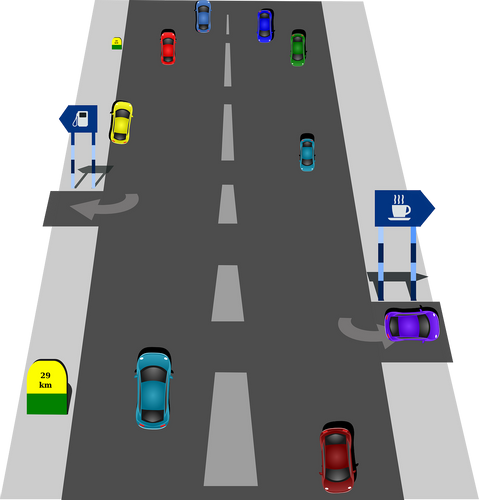Standards Packages
iTeh together with SIST has developed and compiled a comprehensive collection of standard packages to support your standard requirements. Our packages cover an array of content that includes quality management, risk management, road vehicles, machine safety, and much more. With over 200 packages to choose from, you are sure to find a collection to suit your standard needs.
Latest Standards
This document specifies a method for the rapid determination of the plasticity of raw rubber and unvulcanized compounded rubber. It is applicable to the determination of the plasticity retention index (PRI) as specified in ISO 2930.
- Standard9 pagesEnglish languagesale 15% off
This document specifies a method of determining the total carbon and the total hydrogen in coal and coke by a high temperature combustion method.
- Standard15 pagesEnglish languagesale 15% off
This document defines the requirements for developing and documenting the goals, limitations, target end users and target patient population for artificial intelligence (AI) and augmented intelligence (AuI) enabled 2D radiograph analysis software for dentistry applications. It outlines the requirements for appropriate training data, validation data, test data and annotation for the software to ensure that it achieves its intended goals, and is restricted to the aspects. This document does not cover the specific implementation details, and focuses on static (i.e. non-dynamic) AI/AuI.
- Standard21 pagesEnglish languagesale 10% offe-Library read for1 day
This document specifies a method for obtaining a relative measure of the plastic behaviour of hard coal when heated under prescribed conditions. The method is used to obtain values of the plastic properties of coals and blends used in carbonization and in other situations where determination of plastic behaviour of coals is of practical importance. NOTE The empirical nature of this test requires proper equipment calibration to produce fluidity readings which are a true indication of the relative plastic behaviour of the coal.
- Standard13 pagesEnglish languagesale 15% off
- Standard34 pagesEnglish languagesale 15% off
This document specifies the International Standard name identifier (ISNI) for the identification of public identities of parties, i.e. the identities used publicly by parties involved throughout the media content industries in the creation, production, management and content distribution chains.
The ISNI system uniquely identifies public identities across multiple fields of creative activity and provides a tool for disambiguating public identities that might otherwise be confused.
The ISNI is not intended to provide direct access to comprehensive information about a public identity but can provide links to other systems where such information is held.
- Standard17 pagesEnglish languagesale 10% offe-Library read for1 day
- Standard12 pagesEnglish languagesale 15% off
This document specifies a method to determine the resistance to internal pressure of polyethylene (PE), crosslinked polyethylene (PE-X) and unplasticized (PA-U) pipes to verify the condition of the pipe after being subjected to a squeeze-off procedure.
The equipment and procedure used to prepare the test samples and test parameters are given in this document, i.e.:
a) the diameter and series of the pipe to be tested (see 6.1);
b) the number of test pieces (see 6.2);
c) the parameters for the hydrostatic strength tests (see 7.6).
NOTE 1 Further information on the squeeze-off procedure is given in EN 12007-2 and ISO/TS 10839 for polyethylene, and CEN/TS 12007-6 for unplasticized polyamide.
NOTE 2 The squeeze-off procedure is specified to limit gas flow to allow maintenance, repair or to make network connections. Squeeze-off is used in an emergency for pipes carrying other media.
- Standard11 pagesEnglish languagesale 10% offe-Library read for1 day
ISO/IEC 15459-4:2014 specifies a unique string of characters for the identification of individual products and product packages. The character string is intended to be represented in a linear bar code symbol or two-dimensional symbol or other automatic identification and data capture (AIDC) media attached to the entity to meet management needs. To address management needs, different classes of identities are recognized in the various parts of ISO/IEC 15459, which allows different requirements to be met by the identities associated with each class.
The rules for the identification of an individual occurrence of a product or product package, understood to mean the layers zero and one defined in ISO 17367 and ISO 17366, respectively, are defined and supported by examples.
- Standard14 pagesEnglish languagesale 10% offe-Library read for1 day
- Standard9 pagesEnglish languagesale 15% off
- Standard9 pagesEnglish languagesale 15% off
This document specifies the required characteristics of repositories used for the long-term storage of archive and library materials. It covers the siting, construction and renovation of the storage facility, and the installation and equipment to be used both within and around the building.
This document applies to all archive and library materials held in repositories, where mixed media can be stored together with paper-based materials. It does not preclude the establishment of separate areas or compartments within individual repositories, where the environment can be controlled to create conditions suitable for the needs of specific archive materials.
This document does not specify exhibition or display guidelines.
- Standard47 pagesEnglish languagesale 10% offe-Library read for1 day
- Standard41 pagesEnglish languagesale 15% off
- Standard47 pagesFrench languagesale 15% off
ISO/IEC 15459-1:2014 specifies a unique string of characters for the identification of individual transport units. The character string is intended to be represented in a bar code label or other AIDC media attached to the entity to meet management needs. To address management needs, different types of entities are recognized in the various parts of ISO/IEC 15459, which allows different requirements to be met by the identities associated with each type.
The rules for the unique identification for individual transport units, to identify physical logistical transfers, with the identity relevant for the duration of one or more items in the load being held or transported as part of that load, are defined and supported by example.
- Standard13 pagesEnglish languagesale 10% offe-Library read for1 day
- Standard8 pagesEnglish languagesale 15% off
- Standard8 pagesEnglish languagesale 15% off
This document specifies a markup language called QuantML for annotating and representing semantic phenomena relating to quantification in natural language. QuantML comprises an extensible markup language (XML)-based representation format, an abstract syntax and a semantics.
- Standard48 pagesEnglish languagesale 10% offe-Library read for1 day
- Standard43 pagesEnglish languagesale 15% off
- Standard46 pagesFrench languagesale 15% off
This Recommendation | International Standard supplements Rec. ITU-T X.509 | ISO/IEC 9594-8 and Rec. ITU-T X.510 | ISO/IEC 9594-11 by providing an extended description of cryptographic algorithms and guidance in establishment and maintenance of a public-key infrastructure (PKI). It is outside the scope of this Recommendation | International Standard to define new cryptographic algorithms, but it is within scope to discuss already-defined cryptographic algorithms that provide optimal protection, including future protection against attacks using powerful quantum computers. This Recommendation | International Standard specifies how public-key infrastructure (PKI) may be adapted to support machine-to-machine (M2M) communication, e.g., smart grid and Internet of things (IoT), to allow interworking. This Recommendation | International Standard specifies the procedures for establishment and maintenance of a PKI supporting new areas, such as intelligent electricity network (smart grid) and industrial Internet of things.
- Standard102 pagesEnglish languagesale 15% off
This document describes the concepts and principles of information and communication technology (ICT) readiness for business continuity (IRBC). It provides a framework of methods and processes to identify and specify aspects for improving an organization's ICT readiness to ensure business continuity. This document serves the following business continuity objectives for ICT: — minimum business continuity objective (MBCO), — recovery point objective (RPO), — recovery time objective (RTO) as part of the ICT business continuity planning. This document is applicable to all types and sizes of organizations. This document describes how ICT departments plan and prepare to contribute to the resilience objectives of the organization.
- Standard33 pagesEnglish languagesale 15% off
- Draft36 pagesFrench languagesale 15% off
IEC 63522-36:2025 is used for testing all kinds of relays and evaluates their ability to perform under expected conditions of transportation, storage, and all aspects of operational use.
This document defines a standard test method to measure fire hazards of all materials susceptible to fire hazards.
- Standard13 pagesEnglish languagesale 10% offe-Library read for1 day
IEC 63522-25:2025 Used for testing along with the appropriate severities and conditions for measurements and tests designed to assess the ability of DUTs to perform under expected conditions of transportation, storage and all aspects of operational use.
This document defines a standard test method to check the magnetic interference between relays under operating conditions and their influence on other relays in the neighbourhood.
- Standard13 pagesEnglish languagesale 10% offe-Library read for1 day
This document provides a data model and encoding rules for the use of radio frequency identification (RFID) tags for items appropriate for the needs of all types of libraries (including national, academic, public, corporate, special, and school libraries).
This document specifies the rules for encoding
— a subset of data elements taken from the total set of data elements listed in ISO 28560-1 into a basic block, and
— other data elements into extension blocks onto the RFID tag.
A source of additional information about implementation issues is provided in Annex A.
- Standard31 pagesEnglish languagesale 10% offe-Library read for1 day
- Standard25 pagesEnglish languagesale 15% off
- Standard1 pageEnglish languagesale 15% off
Benefits

Full Standards Solution
Our catalog includes not only latest standards but also full meta information about related standardization project lifecycle.

Cost Effective
Our PRICE MATCH GUARANTEE policy with multi-level volume discounts gives our clients the best option in the market. In addition, you can get access to the standards for 3, 10, or 30 days.

Stay Notified
Get alerted to the latest revisions and new standards in the Weekly Newsletter. Standards are constantly changing. Don’t miss a revision that can impact your business.
About Us
iTeh Inc is a software development and IT consulting team of professionals who provide consulting, development and implementation of solutions for all types of businesses.
In cooperation, with the Slovenian Institute of Standardization (SIST), we create a unique solution that covers all aspects of the lifecycle of Standardization organizations. iTeh Standards is a part of the solution that helps SIST to provide and sell their products to Customers.
iTeh Standards Store is an evolving project, our goal is to build long-term relationships with our customers. We believe in delivering quality services to solve our customers' challenges and define success by exceeding our customers' expectations. We are always ready to listen and our experience allows us to provide our customers with helpful effective suggestions. You can contact us by email.
We are committed to providing the best possible experience for our customers.
Compliance with international standards is increasingly becoming one of the key competitive advantages in the global market. Our company creates all conditions for the most comfortable implementation of new documents and norms in the processes carried out by your organization. Some of the key advantages of working with us are:
- Cost-effective - multi-level discounts and permanent updates of the functions give our clients the best option on the market.
- e-Library - access to standards for a period of time of your choice. It is a cost-effective solution for keeping updated with the newest standards.
- Company-wide documents - create a company account and connect all employees with access to purchased standards, e-Library documents, and packages.
- All in one spot - all purchased standards are kept in one place with controlled access by the account administrator.
- Client-centric - providing quality consulting is the prerogative and incentive to create new products that accompany your success and scale.
- 24 / 7 client support
We are dedicated to building mutually beneficial and long-term relationships with our clients. That is why our team focuses on creating services to help our customers develop and achieve new productive results.
























